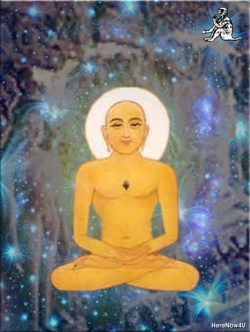Exactly what is Lineage?
Lineage is basically about being able to trace the transmission–ancestry of a particular meditation tradition or meditation teacher back to an individual that was seemingly endowed with at least a modest degree of authentic spiritual realization.
In Buddhist settings, this individual is invariably the historical Buddha who lived approximately 2,500 years ago, but it can also be another enlightened being that expounded the teachings at a different point in time.
In respect of secular meditation and mindfulness modalities, rather than an historic spiritual or religious figure per se, some mindfulness practitioners trace their lineage back to the founder of a particular mindfulness-based approach. Either way, lineage is essentially concerned with authenticity and preserving the spiritual potency or effectiveness of a particular line of teachings.
Thus, lineage effectively ensures the continuity of the true Dharma. This could be (for example) the Buddha-Dharma, Christ-Dharma, Guru Nanak-Dharma, Mohammed-Dharma, or depending upon a person’s perspective and preferences, it could also be the spiritual-Dharma more generally.
A common view held by many Buddhist and non-Buddhist meditation practitioners is that when looking for a suitable meditation teacher, one should ensure that they are of an established lineage.
The general idea is that by working with or receiving teachings from a reputable ‘lineage holder’, a practitioner can reassure themselves that they are in good hands and are getting the ‘real deal’.
Arguably, the method of lineage transmission that the majority of modern day meditation practitioners are most familiar with is that of oral transmission.
Indeed, it seems that quite a number of meditation practitioners subscribe to the view that in order to consider themselves a lineage holder, they need to spend a certain amount of time receiving oral teachings directly from a lineage teacher. However, although oral transmission is probably the most obvious means by which lineage can be acquired, it is by no means the only one.
For example, according to the twelfth century Tibetan Buddhist teacher, Gampopa, if the ‘right student’ at the ‘right time’ reads the ‘right text’ that was written by the ‘right teacher’, then this is the same as meeting the author of the text in person:
In the future, those who think, ‘Alas, I haven’t met him’ [[[Gampopa]]], should simply study and practice the texts that I composed …. There is no particle of difference; it is the same as meeting me. Those who are having a hard time understanding and practising the Dharma, think of me and supplicate with devotion. The blessings will arise naturally.
This also seems to be the view of the nineteenth century Tibetan Buddhist teacher, Patrul Rinpoche:
In this world, such an eminent text [the Dharmadhatu Treasury by Longchenpa], is liberation through seeing, as well as hearing and recollecting. Whoever connects with it is a future Buddha. If you realise it, you are a Buddha of the present.
As the power of the blessings lineage is unbroken, you will receive the wisdom of the true lineage through his trusted intention. Sealed with the entrustment to future disciples, it is equal to meeting the Omniscient master in person.
Based on the views of some Buddhist teachers, it seems that lineage can actually be directly transmitted via the written word. In addition to transmission by oral or written means, a further but perhaps less obvious form of lineage transmission that is referred to in the traditional meditation literature is that of mind-to-mind transmission.
Transmissions of this nature are arguably less common than the abovementioned oral and written transmission formats, and mind-to-mind transmission requires a highly realised teacher and a student that is spiritually and karmically ‘ripe’.
Interestingly, mind-to-mind transmissions do not actually require the teacher to be physically present. For example, the prominent eighth century Tibetan Buddhist teacher, Jigme Lingpa, is recorded as having received extensive volumes of teachings during visionary encounters with Manjushrimitra, Guru Rinpoche (also known as Padmasambhava), Vimalamitra and Longchenpa.
Other reported examples include (i) the tenth century Buddhist saint, Tilopa, who received an entire lineage (the Dakini hearing lineage) during visionary encounters with Vajradakini; (ii) the Tibetan Buddhist teacher, Jamyang Khyentse Wangpo, who received extensive transmissions during visionary encounters with Zurchungpa and (iii) Garab Dorje, who received extensive essence transmissions directly from Buddha Vajrasattva.
Another form of lineage transmission that does not require a teacher to be physically present is that of ‘terma’ transmissions.
Terma transmissions refer to spiritual practitioners finding—sometimes in their own minds—teachings that were hidden by previous enlightened teachers.
Some reported examples of such individuals or ‘treasure revealers’ are the spiritual adepts Jatson Nyingpo, Rigdzin Godem and Jamyang Khyentse Wangpo. This is what the Buddhist teacher Tulku Urgyen Rinpoche said about terma transmissions and about lineage more generally:
As teachings are passed down from one generation to the next, it is possible that some contamination or damage of samaya may creep in. To counteract this, Padmasambhava in his immeasurably skilful wisdom and compassion gave us fresh hidden treasures [i.e., termas]….
The distance from the Buddha to the practitioner is very short when a revelation is fresh and direct; there is no damage in the line of transmission. The purity or lack thereof lies not in the teaching itself, but in how distant the line of transmission is.
